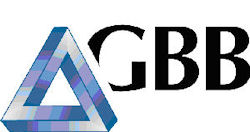Team:Groningen/protocols/Motility assay
From 2013.igem.org
(Difference between revisions)
(Created page with "<html> <head> <meta http-equiv="X-UA-Compatible" content="IE=EDGE" charset="utf-8" /> <link rel="stylesheet" href="https://2013.igem.org/Team:Groningen/CSS/DefaultPage?action=ra...") |
|||
| (14 intermediate revisions not shown) | |||
| Line 22: | Line 22: | ||
<div class="mainContent"> | <div class="mainContent"> | ||
| - | < | + | |
| - | + | <h1>Motility assay</h1> | |
| - | < | + | Add 13 ml of the motility agar (0.4%) in every petri dish. |
| - | < | + | <br>Inoculate the plates with the strain of interest (10 µl of overnight culture with an OD<sub>600</sub> of 0.4). |
| - | < | + | <br>The spot is dried for half an hour, after which the plates are inoculated at different temperatures (25°C and 37°C) for 16 hours. |
| - | <p> | + | <br>After 16 hours of growth, the diameter of the colony is measured. |
| - | + | ||
| - | + | <p> | |
| - | <p> | + | <b>Motility Agar 0.4% (100 ml) </b> |
| - | < | + | </p> |
| - | < | + | |
| - | < | + | <table id="normal" width="60%"> |
| + | <tr> | ||
| + | <th>compound</th> | ||
| + | <th>amount</th> | ||
| + | </tr> | ||
| + | |||
| + | <tr> | ||
| + | <td>LB broth </td> | ||
| + | <td>2 g</td> | ||
| + | </tr> | ||
| + | |||
| + | <tr> | ||
| + | <td>agar</td> | ||
| + | <td>0.4 g</td> | ||
| + | </tr> | ||
| + | </table> | ||
| + | |||
| + | |||
</div> | </div> | ||
Latest revision as of 00:22, 5 October 2013
Motility assay
Add 13 ml of the motility agar (0.4%) in every petri dish.Inoculate the plates with the strain of interest (10 µl of overnight culture with an OD600 of 0.4).
The spot is dried for half an hour, after which the plates are inoculated at different temperatures (25°C and 37°C) for 16 hours.
After 16 hours of growth, the diameter of the colony is measured.
Motility Agar 0.4% (100 ml)
| compound | amount |
|---|---|
| LB broth | 2 g |
| agar | 0.4 g |
 "
"







